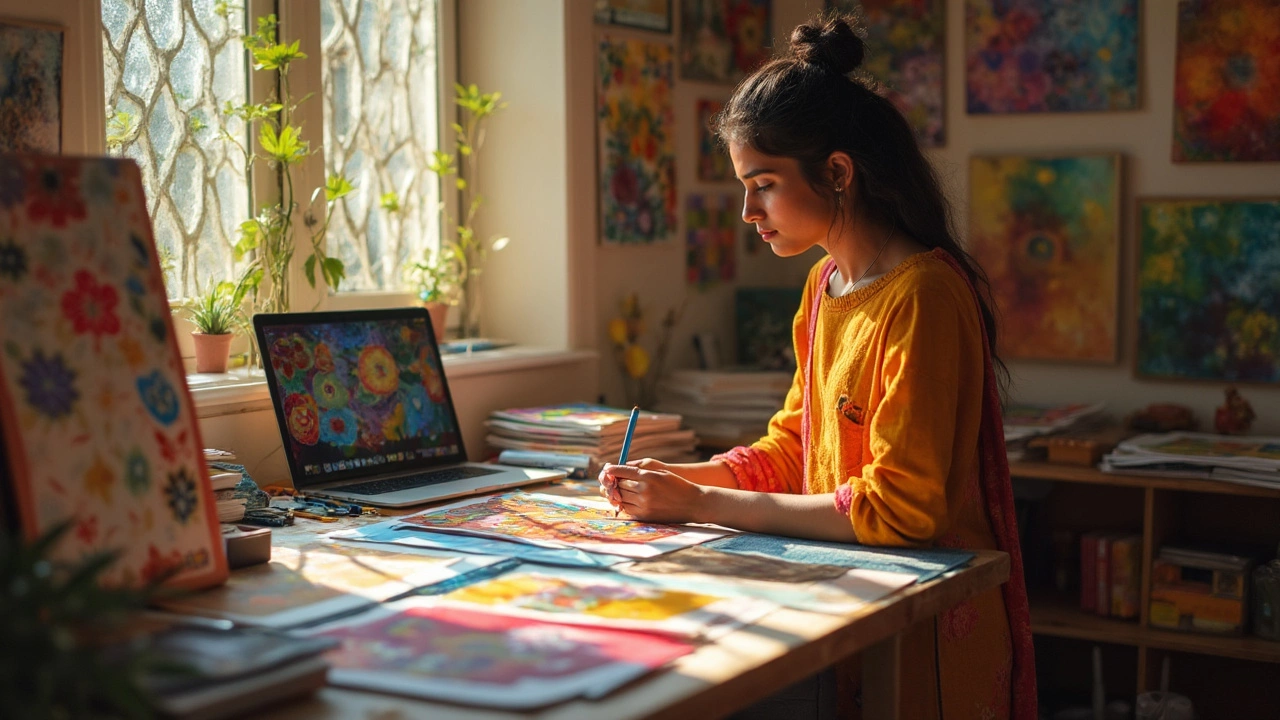Digital Scanning: Quick, Clear, and Ready for Any Project
If you have a painting, sketch, or old document that you want to keep online, digital scanning is the fastest way. It turns a physical piece into a high‑quality file you can share, print, or archive. In this guide you’ll get straight‑forward advice on gear, settings, and file handling so you can scan like a pro without spending a fortune.
Choosing the Right Gear
First thing you need is a scanner that matches the size of your artwork. Flat‑bed scanners work great for paper, drawings, and small canvases up to about 12" x 12". If you’re dealing with larger paintings or textured pieces, a large‑format scanner or a DSLR camera on a copy‑stand can do the trick.
Look for a scanner with at least 600 dpi optical resolution. That gives you enough detail for most prints up to 24" × 36" without getting blurry. Lower‑resolution units cheap out on fine lines and subtle color shifts.
Don’t forget lighting. A scanner with built‑in LEDs provides even illumination, but if you use a camera, a softbox or two diffused lights will avoid harsh shadows. Keep the light temperature consistent—around 5000 K works for most art.
Setting Up Your Scan for Best Results
Before you hit start, clean the glass surface. Even a speck of dust shows up on a 600 dpi scan. Use a lint‑free cloth and a little isopropyl alcohol if needed.
Choose the right file format. For archival purposes, save a master copy in TIFF – it’s lossless and keeps all the color data. For everyday sharing or posting online, JPEG at 80‑90 % quality is fine and keeps file sizes low.
Color mode matters too. Scan in 48‑bit RGB if you can; it captures more shades than the standard 24‑bit. If you need a black‑and‑white version, select grayscale rather than converting a color scan later – it preserves detail.
Adjust the exposure if the scanner lets you. Slightly over‑expose a dark piece to bring out hidden details, then pull the levels down in Photoshop or GIMP. Avoid clipping the whites; you want a full range from black to white.
Once you have the raw file, do a quick check. Zoom in 100% and look for banding, dust, or uneven edges. Most scanners include a dust‑removal filter, but a second pass in an editor can clean up stubborn spots.
Now you’re ready to store the file. Create a folder structure that includes the artist’s name, artwork title, and date of scan. Back it up on a cloud service and an external hard drive – redundancy saves you from losing years of work.
Finally, think about how you’ll use the scan. If you plan to print, calibrate your monitor so the colors you see match the printed outcome. Many online print services accept PDFs, so you can convert your TIFF to PDF with the right color profile attached.
Digital scanning doesn’t have to be intimidating. With the right scanner, a clean setup, and a few smart file choices, you can preserve any artwork in crisp, usable form. Try these steps on your next piece and see how easy it is to bring physical art into the digital world.
